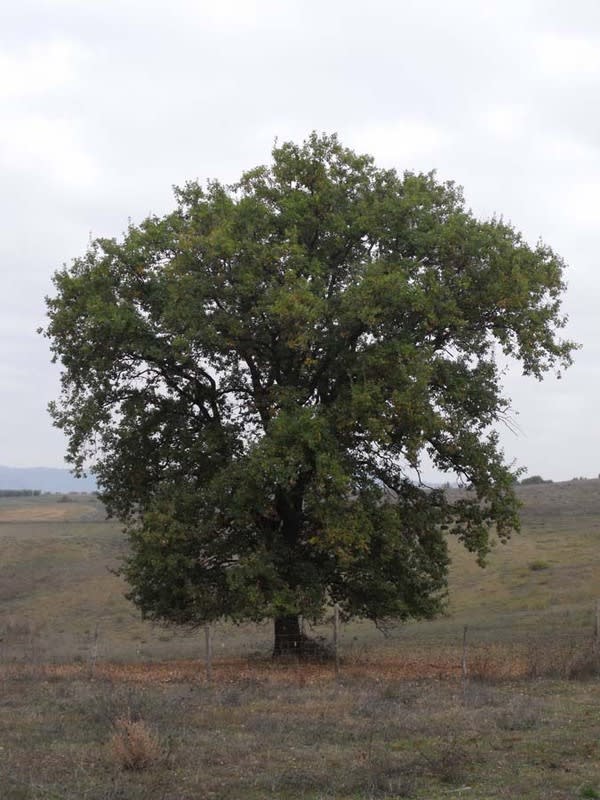
🌿 Morphology
🌞 Growing conditions
🌍 Origin and family
🌾 Uses
Warning: Despite the care taken in writing this sheet, it is essential to cross-reference sources before using or consuming any plant. When in doubt, consult a qualified professional
Permaculture uses
Downy oak is primarily valued for its timber, providing durable and strong wood. The acorns can be used as animal feed after tannin removal, and historically as a human food source prepared through leaching or boiling. The leaves can be used as mulch. Its drought tolerance makes it suitable for dryland permaculture systems, providing shade and habitat. The tree also hosts mycorrhizal fungi, benefiting other plants.
Permapeople description
Downy Oak, a species of white oak native to Europe and Southwest Asia. It is a deciduous tree growing to 10–15 m tall.
Botanical description
Quercus pubescens, the downy oak, is a deciduous tree growing to 20–25 meters tall, though sometimes shorter. It is characterized by its pubescent (downy) young shoots and leaves, hence the name. The leaves are 5–14 cm long and 3–8 cm broad, with 5-9 shallow lobes on each side. The acorns are 2–3 cm long, maturing in a single year. The bark is gray and fissured. It is drought-tolerant and often found on dry, calcareous soils. It is a member of the white oak group.
Companion planting
Quercus pubescens benefits from and benefits mycorrhizal relationships. It can provide shade and wind protection to more sensitive plants. Avoid planting near plants that are susceptible to oak root fungus if present in the area.
Propagation methods
Propagation is primarily by seed (acorns). Acorns should be sown in the autumn or stratified and sown in the spring. Cuttings are difficult to root. Grafting may be used to propagate specific cultivars.
History and traditions
Downy oak has a long history of use in Southern Europe for timber, charcoal production, and firewood. The acorns were historically a food source, especially in times of scarcity. The tree has cultural significance in some regions, often associated with longevity and strength.
Usage calendar
Flowering occurs in spring (April-May). Acorns mature in autumn (September-October). Planting is best done in autumn or early spring. Pruning, if needed, should be done in late winter or early spring.
